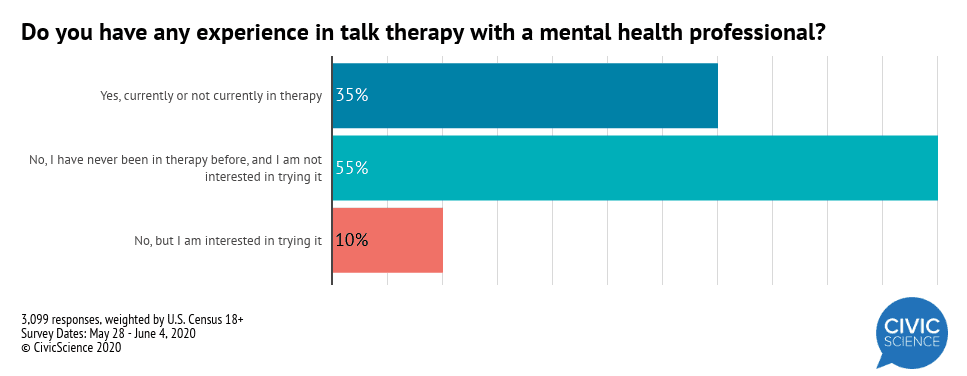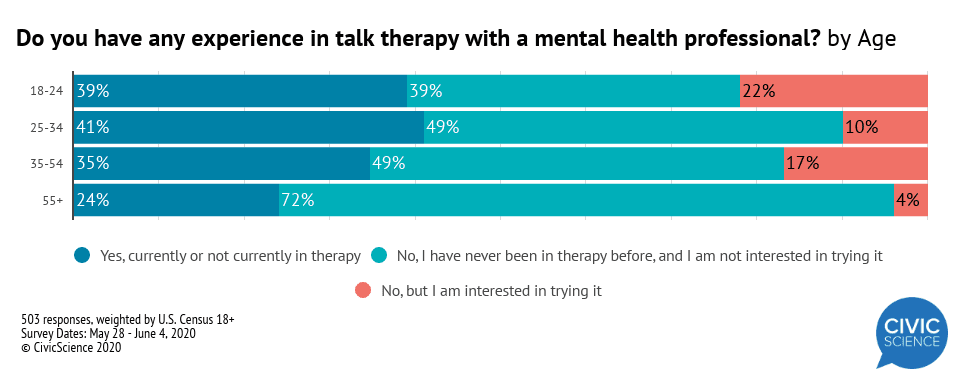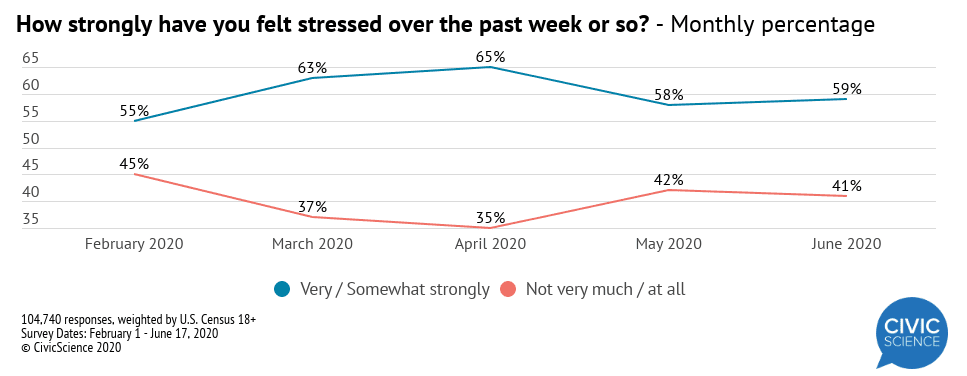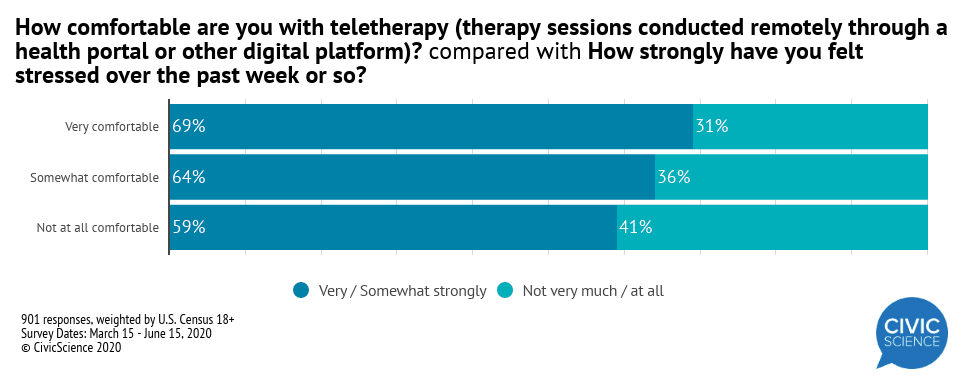Last month was Mental Health month, and in the midst of a continuing pandemic, as well as the current state of race relations in the U.S., it seemed that now, more than ever, would be a necessary time to check in on how Americans are feeling as well as their experience with therapy.
As the data show, the majority of U.S. adults (84%) do not think there is enough awareness in the country about mental health care issues.
This lack of awareness could be one of the factors behind the data below, where 55% of U.S. adults have never tried therapy and have no interest in doing so.
The largest percentage of those in therapy are younger Millennials, and the largest percentage of those interested in giving it a try are Gen Z. While this is not surprising, it does suggest that addressing mental health concerns with the help of a licensed professional could see an upswing, over time.
That said, while more than half of Americans have no interest in therapy, 59% feel stressed as of June. While this number is lower than it was in March and April of this year, stress has only slightly increased (by one percentage point) since May–roughly around the same time many states began easing COVID-19 lockdown restrictions. Stress in June is still higher than it was in February, before the pandemic began in the U.S.
So how are non-therapy attendees navigating the rise and fall of their stress levels?
The Appeal of Teletherapy
Despite the fact that stay-at-home orders have eased, telehealth is still an option for many seeking therapy. Of those who do receive therapy, the majority (58%) are at least somewhat comfortable with teletherapy sessions.
Additionally, those who have felt the most stressed are also the most comfortable with teletherapy–perhaps given a desire to feel better, regardless of the physical distance.
Ultimately, there is still a lot to be desired when it comes to mental health awareness in the U.S. While stress continues to run rampant, most adults believe that there is not enough discussion of mental health care concerns. So while therapy and teletherapy may serve a select demographic, there is a clear divide between those who attend therapy and those who do not.














